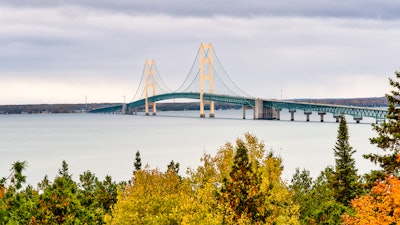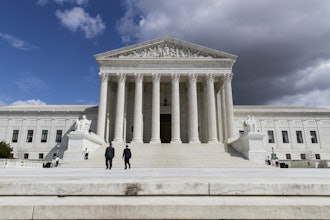
MACKINAW CITY, Mich. (AP) — Images from an underwater vehicle seem to reveal stone patterns on the bottom of the Straits of Mackinac in northern Michigan, possible evidence of Native American artifacts from thousands of years ago, a newspaper reported.
A group of amateur explorers raised money to look at Enbridge Inc.'s oil pipeline on the lake bottom. The four women hired a boat equipped with an underwater vehicle and side-scan sonar. It can map the sea floor based on sound.
The sonar showed what appears to be stones in a half-circle, the Detroit Free Press reported.
“It was really just amazing,” said Andrea Pierce, 56, of Ypsilanti, a member of the Little Traverse Bay Bands of Odawa Indians.
The Great Lakes weren't always around. Glaciers cut deep gorges into the earth, which then filled with water over thousands of years.
“People think of the edge of a glacier as a formidable place,” said John O'Shea, a Great Lakes archaeologist at the University of Michigan. “But it would have been a very rich place, attracting animals and hunters.”
Enbridge operates a dual pipeline known as Line 5 in the Straits, which connect lakes Huron and Michigan. It's now proposing to put the pipeline in a tunnel under the lakebed, though critics want any pipeline shut down.
“These things look intentionally spaced to me as a lay person. They are evenly spaced, there are circles, there are patterns," said Terri Wilkerson, 59, of Pinckney, who created a website, RetireLine5.org.
Wilkerson said she and the women she worked with wanted to make the information public before a public comment period ends Monday on certain state permit requests by Enbridge.
“The tribes first, and the state, should take the lead on investigating this. And Enbridge should be blocked now from disturbing anything in that area," Wilkerson said.
Enbridge last year told the state that none of 32 “acoustical contacts” near the tunnel project area "were determined likely to represent a submerged cultural resource.”
Spokesman Ryan Duffy said the company is willing to share its findings with tribal governments and others.
"We do not know if they assessed the same areas we did," he said.
Hugh McDiarmid Jr., a spokesman for the state environment department, said the State Historic Preservation Office is aware of concerns from tribes and O'Shea.
A tunnel through bedrock "greatly reduces the likelihood that it would be routed through preserved historic artifacts,” McDiarmid said.





















